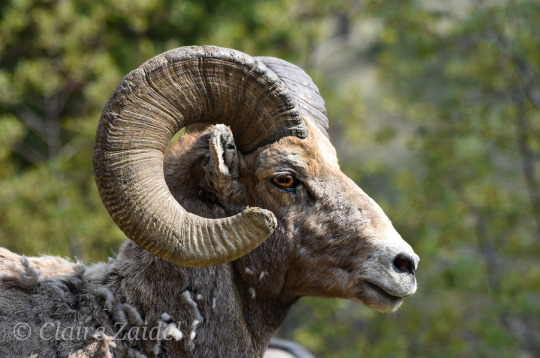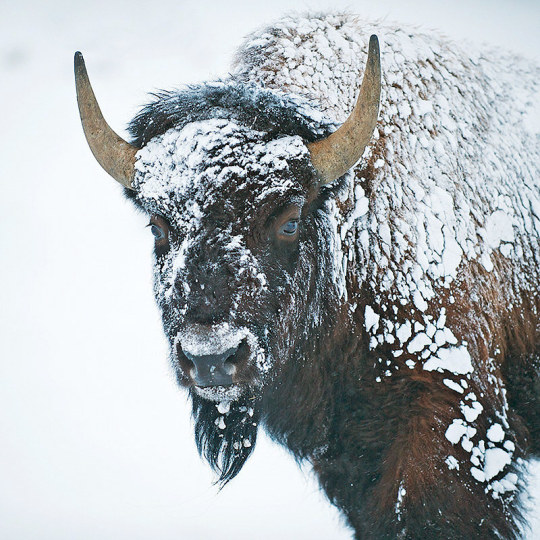#Wyoming Wildlife
Explore tagged Tumblr posts
Text

A quick glance, then back to foraging
10/25/24
74 notes
·
View notes
Video
Head to Head by Doug Dance Via Flickr: Yellowstone National Park, WY June 2011 Photographed in 'Little America'.
#bison#mammal#animal#cow'#calf'#'Yellowstone#National#Park'#Wyoming#Doug Dance Nature Photography#Doug#Dance#Nature#Photography#DDNP#Yellowstone wildlife#Yellowstone National Park#Wyoming wildlife#flickr
52 notes
·
View notes
Text





the mustangs of salt wells creek 🐞
#mustang horse#wild mustangs#wild horses#horses#horse breeds#salt wells creek#national park#wyoming#rock springs#wild west#wild animals#wildlife#equestrian#equidae#equine#equines#horse#horse posting#horseblr#horse riding#horse photography#equine photography#nature photography#nature#animals
2K notes
·
View notes
Text

#bighorn sheep#Bighorn#wildlife#wyoming#wyoming wildlife#sheep#wildlife photography#photography#beautiful photos#ram#photographer#wildlife photographer
0 notes
Text
"Two weeks ago [mid-June, 2024], Yellowstone National Park made headlines when a mother grizzly bear was spotted out and about with five cubs in tow — the biggest grizzly bear cub litter ever seen in the park.
Grizzly bears in that region of North America typically only have one to three bear cubs a litter.
Frank van Manen, the leader of the Interagency Grizzly Bear Study Team, said it was possible that an “adoption” event had occurred, in which two mothers give birth in the same year, and one ends up taking on the sibling’s cubs.

In an interview, van Manen told Wyofile that if the bears had all been born in the same litter, it would be the first five-cub litter “recorded in the history of the Greater Yellowstone Ecosystem.”
“Whether it was an adoption or whether it truly is a five-cub litter, it just amazes me that every year there’s some new surprise to us, even after intensively studying this population for more than 50 years,” van Manen said. “I just think that’s cool.” ...
On top of this record sighting, [Grizzly watch Bill] Hamblin is baffled by the sheer number of cubs that have been spotted so far in 2024.
Since they started emerging in the spring, the total count of unique grizzly bear cubs spotted has ticked up to a whopping 18 — triple the average number.
“That’s more than we’ve ever seen,” Hamblin said."
-via GoodGoodGood, July 3, 2024
#yellowstone#yellowstone national park#wildlife#grizzly bear#united states#wyoming#biodiversity#bears#baby animals#cute animals#baby bear#bear#biology#ecology#keystone species#wildlife conservation#conservation#endangered species#ecosystems#rewilding#animal conservation#good news#hope
1K notes
·
View notes
Text

The day of days. Make that weekend unforgettable. Thanks for hangin' with us. - - - - - - - - "Happy Furry Friday, A Bear Fishing at Grand Teton National Park" by born1945 is licensed under CC BY 2.0.
#bear#grand teton#grand teton national park#1930s#postcard#wyoming#grizzly#brown bear#grizzly bear#animals#nature#wildlife#outdoors#friday#fridaybear#fridaybearlovesyou
521 notes
·
View notes
Text

Bob Kuhn (1920-2007), Where the Deer and the Antelope Play, 1996
acrylic on board, 18 1/4 x 33 3/8
“The pronghorn antelope, icons of the American West, persist in their seasonal migration to delight anyone fortunate enough to catch a glimpse of those white rumps spiriting over the sagebrush plains. This work exemplifies Kuhn’s mastery of wildlife articulation and composition.” -catalog notes
425 notes
·
View notes
Text

What does a July morning look like for you? For the American badger depicted in the Museum’s Hall of North American Mammals, it’s spending some time finding breakfast: a Wyoming ground squirrel. The scene featured in today’s Exhibit of the Day takes place in Jackson Hole, Wyoming–and the badger has just spotted the fresh target at the entrance to its burrow. Badgers will dig furiously to excavate underground prey and their own dens. They can quickly tunnel themselves out of sight using powerful forelimbs and long claws. The Museum is open from Wednesday–Sunday, 10 am–5:30 pm. Plan your weekend trip! Photo: © AMNH
#science#amnh#museum#nature#natural history#animals#fact of the day#did you know#badger#american badger#animal facts#wyoming#wildlife#diorama#jackson hole#july
622 notes
·
View notes
Text

186 notes
·
View notes
Text

An American bison (Bison bison) covered in snow in Yellowstone National Park, Wyoming
by Sean Crane
#american bison#american buffalo#bovines#bison bison#bison#bovidae#artiodactyla#mammalia#chordata#wildlife: wyoming#wildlife: usa#wildlife: north america
982 notes
·
View notes
Text

Predation, not fear of wolves, keeps elk from denuding Yellowstone
So you remember that "how wolves change rivers" video that came out a few years ago? The premise was that with the reintroduction of gray wolves to Yellowstone National Park, they singlehandedly altered the behavior of overpopulated elk, who were less likely to damage riparian vegetation and allowed rivers to recover to a more natural state.
It is true that elk behavior has changed, and that has had a positive effect on ecosystem within Yellowstone. However, a new in-dept study demonstrates that it was more of a group effort of several different species of predator--humans included--rather than the wolves alone. It isn't just the presence of wolves that cause the elk to be more fearful, but increased risk of predation overall.
Obviously this is a new study, and it stands alone at the moment. So there will almost certainly be critiques that help us fine-tune our understanding of what's going on here. But the more information we have to flesh out the story of Yellowstone's rewilding, the better.
What I want to emphasize is that this is NOT an argument against the positive ecological role of wolves as a keystone species. There are all too many anti-wolf activists who will see this as an excuse to vilify this species, since those of us who support wolf reintroduction often leaned on the earlier studies to show the benefit of wolves within Yellowstone.
Rather, I want to promote the idea that this study helps demonstrate that biodiversity = good! Wolves are good, mountain lions are good, grizzly bears are good, because they are all a part of the native ecosystems within Yellowstone and beyond. Obviously we now have to balance this out with post-settlement human conflicts, but we have increasing evidence that there are so many more options besides the wholesale extermination of large predatory species anywhere they might ostensibly come into contact with humans or our livestock.
So no, wolves are not the miracle animal that earlier narratives have painted them as, but they are still a crucial keystone species in the ecosystems they historically inhabited prior to European/American colonization and extermination efforts, and this study still supports wolf reintroduction, particularly within Yellowstone.
#wolves#gray wolves#Yellowstone National Park#North America#Wyoming#nature#wildlife#animals#ecology#environment#science#conservation#scicomm#keystone species#elk#habitat restoration#restoration ecology#how wolves change river
78 notes
·
View notes
Text
Sow grizzly and three cubs on a kill, on private property. I bought a new computer and was cleaning out the old one and found this video.
24 notes
·
View notes
Video
Head to Head by Doug Dance Via Flickr: Yellowstone National Park, WY
#bison#mammal#animal#cow'#calf'#'Yellowstone#National#Park'#Wyoming#Doug Dance Nature Photography#Doug#Dance#Nature#Photography#DDNP#Yellowstone wildlife#Yellowstone National Park#Wyoming wildlife#flickr
118 notes
·
View notes
Text






Yellowstone ‘21
39 notes
·
View notes
Text

dgrimr - BISON in Grand Prismatic Spring, Yellowstone National Park, Wyoming, USA
TAG themes on ‘Archive’ https://scooby-doo-exploration.tumblr.com/archive
#dgrimr#bisons#geysers#yellowstone#national parcs#wyoming#grand prismatic spring#usa#photos#wild animals#wildlife#animals & wild animals
34 notes
·
View notes
Text

Winter in Grand Teton National Park,Wyoming
Photo by Tenley Thompson
60 notes
·
View notes
